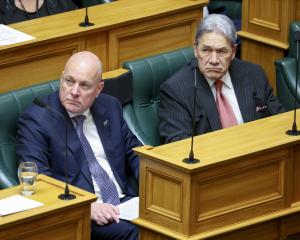
It was during the build-up to the nurses’ 24-hour strike, their first in 30 years.

It would not be exaggerating to suggest nobody would notice if I went on strike. If I am honest, my striking would be welcomed.
My main approach, slapping a sticking plaster on anything gruesome to hide it, particularly if blood is involved, has not always found favour with the grandchildren.
On one occasion, where the child involved treated me to about half an hour of hysterics over a painful splinter in a hand because they were convinced death was imminent, I wasn’t allowed anywhere near with a plaster, ice, tweezers, or anything vaguely useful. My desperate suggestion of a trip to an adored aunt, who is a nurse, met with more ear-piercing histrionics.
A calming bath turned out to be of dubious benefit, but the shameless use of ice cream (not applied to the wound, I hasten to say) did the trick. There, I was channelling my grandmother who, reflecting on her child-rearing years when in her 90s, said her one regret was not using more bribes. In the splinter incident, the bribe’s impact lasted long enough for me to return the grandchild home the next day so the parents could deal with the aftermath.
The decades-long lack of progress in my nursing prowess has been understandable, but sadly it seems to mirror what has happened with nurses’ pay and conditions, despite high hopes for improvements after the 2018 settlement.
As well as the pay issue, there was considerable disquiet about safe staffing in public hospitals, something which had been of concern for decades.
There was much hullabaloo about the safer staffing accord signed by the district health boards and the New Zealand Nurses Organisation (NZNO) under which the DHBs and the Ministry of Health would work with the union to monitor the implementation of a safe staffing tool called Care Capacity Demand Management (CCDM).
On the Safer Staffing Accord section of the Ministry of Health website, regular updates to the sector on the accord initiatives peter out in August 2019.
In March this year, the chief nursing officer’s update to nurses had a section on the accord summarising its achievements and referring to the tracking of progress on the implementation of CCDM. Under the accord, it looked as if DHBs were supposed to have implemented additional staffing needs identified by the CCDM by this month. Nurses’ concerns about safe staffing have not gone away.
I note the NZNO pointed out that on the day of the recent strike, some DHBs requested to have more staff on duty to provide life-preserving services than they would on a usual day.
As the union rightly pointed out, this should concern everyone and, after years of delays and failed promises, their members want to see some accountability on the part of the DHBs.
I wonder how easy it is to fudge the reporting of the acuity of patients as required under the CCDM system (to determine whether staffing levels are correct for the demands of the relevant patients) to make the situation look better than it really is.
Instances have been reported of frustrated nurses with limited time on shifts to complete myriad tasks being reluctant to spend part of that precious time participating in the process of recording because when they are truthful about the need, it does not result in more staff being allocated.
It will be interesting to see what the independent evaluation of NZNO’s safe staffing strategies will turn up — expressions of interest for this work closed last month.
It is always baffling to me that nurses, despite being the largest group of health professionals (almost 60,000 as at the end of March last year) and highly unionised, have become the poor relations of the health system where they keep on keeping on, frequently picking up others’ work just to keep the show on the road (as illustrated in Bert Teekman’s confronting 2012 thesis ‘‘In Search of Nursing: The Long Term Impact of Health Reforms on Ward Nursing’’).
It is about more than money, as I wrote three years ago.
If the management model introduced in the 1990s, which Dr Teekman said reduced nurses to micro-managed task-oriented workers with reduced opportunity for individualised patient care, does not change, it is hard to see nursing in our public hospital wards as rewarding, no matter what the pay.
It’s not clear what will happen next in this saga, but I suspect it is most likely to be a short-term sweetener, like my ice cream bribe, which does nothing to sort out the embedded and festering splinter.
- Elspeth McLean is a Dunedin writer.












